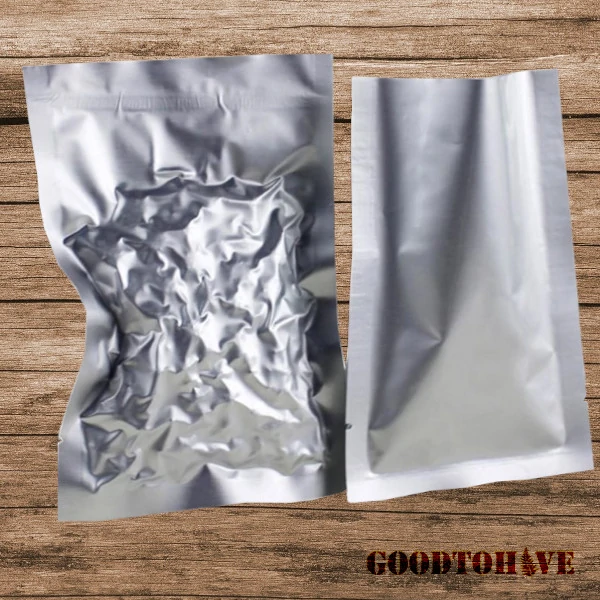
Storing Baby Formula in Mylar Bags
As a prepper, you understand the importance of being prepared for any situation. When it comes to ensuring that your baby’s nutritional needs are met

In the realm of emergency preparedness, choosing the right packaging solution is crucial to ensure the longevity and quality of stored supplies. Mylar bags have emerged as a popular choice among preppers due to their exceptional protective properties. When it comes to prepping, deciding between small (1-gallon) and big (4 to 5-gallon) Mylar bags is a significant consideration. This article aims to delve into the advantages and disadvantages of both options, taking into account factors such as convenience, versatility, capacity, and overall suitability for prepping applications.
Mylar bags, constructed with a metalized polyester film called BoPET (biaxially-oriented polyethylene terephthalate), provide an effective barrier against external elements such as moisture, oxygen, and light. This metalized layer acts as a shield, preventing spoilage, oxidation, and degradation of stored items. Mylar bags are a popular choice among preppers because of their ability to maintain the freshness and quality of supplies for extended periods.
Small Mylar bags, typically 1 gallon in capacity, offer several advantages for prepping purposes. Their compact size facilitates easy storage, portability, and organization. Preppers can effectively portion and categorize their supplies, minimizing waste and ensuring efficient inventory management. The smaller size also allows for easy inclusion in bug-out bags and emergency kits, making them an essential component of grab-and-go preparedness.
Moreover, small Mylar bags are cost-effective. They require fewer oxygen absorbers and desiccants, resulting in reduced packaging costs. This makes them an attractive option, especially for preppers on a budget.
However, it is important to consider the limitations of small Mylar bags. Their limited capacity may not be suitable for storing larger quantities of supplies or bulk items. Preppers with larger families or those preparing for extended periods may find it challenging to fit all necessary items into smaller bags. Additionally, filling and sealing numerous small bags can be time-consuming, especially when packaging a substantial amount of supplies.
On the other hand, big Mylar bags, typically 4 to 5 gallons in capacity, offer unique advantages for preppers with different needs. The larger size allows for the storage of bulk quantities of food and other essential supplies. This makes them ideal for long-term prepping or catering to the needs of larger groups or families.
The increased capacity of big Mylar bags also facilitates the storage of larger or irregularly shaped items, such as emergency blankets, sleeping bags, or larger food containers. Their versatility enables preppers to include a wide range of supplies, ensuring comprehensive preparedness.
Filling and sealing big Mylar bags can be more efficient and time-saving compared to smaller bags. The larger opening allows for easier pouring or scooping of supplies, while sealing is usually a quicker process. This can be advantageous when faced with time constraints or when packaging a significant volume of supplies.
However, it is important to consider the potential challenges of big Mylar bags. Their larger dimensions require more storage space, which may pose difficulties for those with limited storage areas or those needing to transport their supplies frequently. Additionally, the larger capacity of these bags may necessitate the use of additional oxygen absorbers and desiccants to maintain the desired level of freshness and protection.
When deciding between small and big Mylar bags for prepping, several factors should be considered:
If you are prepping for a short-term emergency or for portable kits, small Mylar bags may be more suitable. They offer convenience and ease of use in compact situations. However, for long-term prepping or storing larger quantities, big Mylar bags provide ample space and versatility.
Consider the number of individuals you are prepping for. Smaller families or individuals may find small Mylar bags sufficient, while larger families or groups may require the capacity provided by big Mylar bags.
Assess the nature of the items you plan to store. If you have larger or irregularly shaped items, big Mylar bags can accommodate them more effectively. On the other hand, if you primarily require smaller portions or need to separate items into categories, small Mylar bags may be the better choice.
Evaluate the amount of storage space available and whether you need to transport your supplies. Small Mylar bags are more compact and portable, while big Mylar bags require more storage space but can house a greater quantity of supplies.
In the world of prepping, choosing the right Mylar bag size is an essential decision. Small and big Mylar bags each have their advantages and considerations. Small bags offer convenience, portability, and organization, while big bags provide capacity, versatility, and efficiency. Assessing your prepping needs, storage space, and the types of supplies you plan to store will help you make an informed decision. Remember, there is no one-size-fits-all solution, and a combination of both small and big Mylar bags may be the most suitable approach for comprehensive emergency preparedness

As a prepper, you understand the importance of being prepared for any situation. When it comes to ensuring that your baby’s nutritional needs are met

If you’re a fan of probiotic-rich foods, you’ve probably heard of kefir. This tangy, fermented drink is packed with beneficial bacteria and yeast, making it

Making your own butter at home is a rewarding and surprisingly simple process. With just a few basic ingredients and tools, you can create rich,